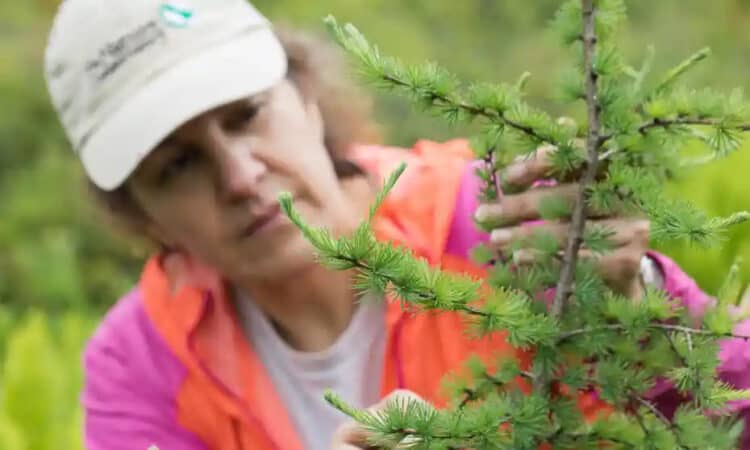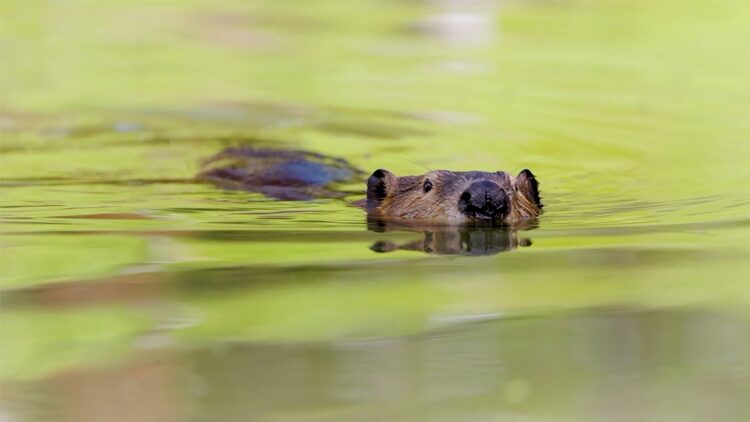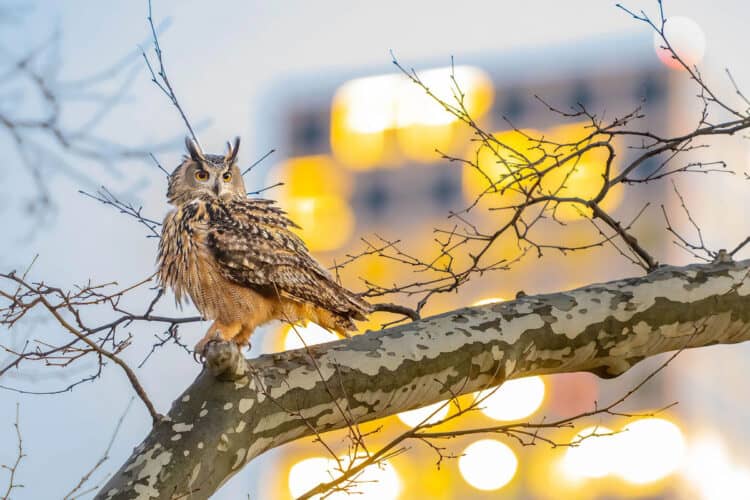The extraordinary ability of eager beavers to engineer degraded land into wildlife-rich wetlands has been revealed by a new study in Scotland.
Scientists studied the work of a group of four re-introduced beavers over a decade and found their water engineering prowess created almost 200m of dams, 500m of canals and an acre of ponds. The result was a landscape “almost unrecognisable” from the original pasture that was drained over 200 years ago, with the number of plant species up by nearly 50% and richly varied habitats established across the 30 acre site.
Beavers were hunted to extinction in the UK in the 17th century, but a few hundred now live in Scotland, where they are now deemed a native species again. Interest is growing rapidly in controlled releases in the rest of the UK, where only a few dozen live, with a group in Devon being monitored closely and an application for reintroduction in Wales being considered.
The researchers say their new work provides solid evidence that beavers can be a low-cost option in restoring wetlands, an important and biodiverse habitat that has lost two-thirds of its worldwide extent since 1900.
“Wetlands also serve to store water and improve its quality – they are the ‘kidneys of the landscape’,” said Professor Nigel Willby, at Stirling University and one of the study team. Earlier research by the team showed how beaver dams can slow water flows, reducing downstream flood risk and water pollution.
Beavers build their elaborate waterworks to create pools in which they can shelter from their traditional predators, bears, wolves and wolverines. The new research, published in the journal Science of the Total Environment, regularly surveyed the site near Blairgowrie in Tayside where two beavers were released in 2002 and began to breed in 2006. Beavers live 10-15 years in the wild and the average number of beavers present during the study was four.
“After 12 years of habitat engineering by beaver, the study site was almost unrecognisable from its initial state,” the scientists concluded: “The reintroduction of such species may yet prove to be the missing ingredient in successful and sustainable long-term restoration of wetland landscapes.”
Alan Law, another member of the team from Stirling University, said: “We know lots about the benefits of beavers in natural settings, but until now we did not know the full extent of what they can achieve in present-day landscapes where restoration is most needed.”
He said wetland restoration usually involves ditch blocking and mowing or grazing to maintain diversity: “Beavers offer an innovative, more hands-off, solution to the problem of wetland loss. Seeing what beavers can do for our wetlands and countryside highlights the diverse landscape we have been missing for the last 400 years.”
However the scientists said beaver reintroductions had to be carefully managed to deal with the potential impacts on farmers, who fear crops being raided by beavers and damage to embankments that protect low-lying fields and other areas from floods.
“Any species introduction, particularly if it has not been in this country for hundreds of years, can have a massive impact on the many benefits that the countryside delivers,” said Mark Pope, chair of the National Farmers Union’s environment forum. “The impact of beavers is assessed across the whole landscape considering the impacts on all land uses. This study is just one piece of that big jigsaw. We need to learn from Scotland’s experiences before any decisions are taken on the future status of beavers.”
Anglers are also concerned about the impact of beaver dams on salmon and other fish, fearing they might block migration upstream. But Wilby said: “The main conclusions from recent studies were that the overall effect of beavers was positive.” This is because greater biodiversity provides more food for the fish and the deeper pools maintain stable cool water temperatures, even as the climate warms.
“I think as long as beavers have plenty of space to form a decent number of territories, there are enormous potential benefits,” said Wliby. “Sometimes the negative views of farmers can dominate.”
This article was first published by The Guardian on 19 Jul 2017. Lead Image: Eurasian beaver (Castor fiber) balanced on a branch it has cut at a feeding station in its pond at Tayside, Scotland. Photograph: Nick Upton/Alamy Stock Photo.
We invite you to share your opinion whether the Eurasian beaver should be “re-wilded”? Please vote and leave your comments at the bottom of this page.
Thank you for voting.
Editorial Comment: The purpose of this poll is to highlight important wildlife conservation issues and to encourage discussion on ways to stop wildlife crime. By leaving a comment and sharing this post you can help to raise awareness. Thank you for your support.







Leave a Reply